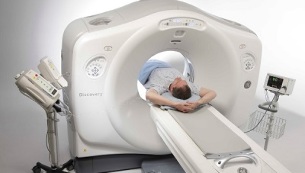
Chest osteochondrosis is rare, but can cause many complications. It is important to make a thorough diagnosis to make an accurate diagnosis. Treatment should be timely and thorough. Preventive measures will help prevent the development of such diseases.
Osteochondrosis of the thoracic spine is a dystrophic disorder of cartilage structure. Without timely and effective treatment, osteochondrosis can cause a variety of complications, so it should not be ignored. Preventive measures will help prevent such pathologies.
Common features of this disease
Osteochondrosis is a lesion of the musculoskeletal system that is relatively common, but rarely affects the thoracic region compared to other parts of the spine. This is due to the fact that this part of the spinal space is the least moving, therefore it experiences less stress.
This feature is also a danger of disease - the symptoms are less noticeable, so the patient goes to the doctor with further osteochondrosis.
The disease is characterized by the development of degenerative and dystrophic processes. They cause pathological changes affecting bone and cartilage tissue. If left untreated, the pathology alters the structure of the ligaments, intervertebral discs, joints, causing their destruction.
With the development of osteochondrosis, bone structure is affected first, then pathological processes spread to the structure of cartilage, muscle, connective tissue. At a young age, such pathological changes lead to premature aging of the body.
Classification
Pathology is characterized by gradual development, therefore, there are four stages (degrees), each of which is characterized by specific clinical manifestations and complications:
- The first stage usually involves the rupture of the intervertebral disc, which can cause excessive stress or sudden movement.
- In the second stage, the protrusion of the intervertebral disc is observed. In this case, the disc inflates into the intervertebral canal - protrusion usually no more than half a centimeter. At this stage, spinal space instability develops.
- The third stage of osteochondrosis is characterized by increased intensity of clinical manifestations and is often accompanied by intervertebral hernias.
- The fourth stage of the disease is called the most severe and dangerous. At this stage, osteophytes appear. Their proliferation puts pressure on the spinal cord and nerve endings.
Reason
Osteochondrosis can develop at any age. The risk of its occurrence is not related to gender.
The disease often develops against the background of the following factors:
- age - people who have passed the 40-year mark are at risk;
- various spinal pathologies, including curvature of the spinal space;
- hereditary tendencies;
- trauma resulting in damage to the intervertebral disc;
- chronic stress;
- hypothermia;
- hormonal imbalances, substance metabolism;
- impaired blood circulation in the thoracic area;
- features professional activities that increase the load on the thoracic area.
Symptoms of osteochondrosis of the thoracic spine
The disease can have a variety of symptoms, and sometimes it manifests itself abnormally. Often, pathology is indicated by the following signs:
- Pain. These symptoms are the main ones. Painful sensations usually occur when the body is in one position for long periods of time, physical exercise, lifting weights. During pathology, pain can also be seen at rest, increasing due to any movement. He can be dull or sick.
- Crush in the middle of the back. In this case, it is more difficult for a person to breathe. Pain is felt while inhaling or exhaling deeply.
- Body parts become numb.
- There may be anxiety and itching.
- The local temperature in the feet is decreasing.
- Itching and burning may be felt in the lower leg.
- If the pathology affects the cardiovascular system, causing it to malfunction, this may be accompanied by peeling of the skin, thinning of the nail plate and increased fragility of the nail.
- With the development of osteochondrosis, the work of the organs of the gastrointestinal tract is disrupted, which can cause various symptoms: nausea, heartburn, bloating, diarrhea, constipation, painful sensations in the stomach.

Pain is one of the main symptoms of breast osteochondrosis, but it can manifest itself in a completely different way. In some cases, dorsalgia is observed - a painful sensation arises at the site of the lesion and persists for a long time. In other cases, dorsago occurs - the pain manifests itself strongly and sharply, arises on paroxysms, restricts muscles and interferes with breathing.
The clinical picture of osteochondrosis is highly dependent on its stage:
- In the first stage of the disease, rupture of the intervertebral disc is usually observed. This phenomenon is manifested by severe pain and muscle tension. This sensation is reminiscent of the effects of an electric current, a discharge that seems to pass through the spine.
- In the second stage, protrusion can be seen, which is accompanied by pain in the thoracic area, which can also affect internal organs.
- In the third stage of pathology, pain occurs more frequently. Becoming more difficult for the patient to breathe, headaches appear. This disease can to some extent interfere with the work of the heart.
- In the fourth stage, due to nerve root compression, intercostal neuralgia may develop. In this case, a sharp pain occurs in the chest. At first, it only affects one area, but then spreads to the rest of the chest. This makes it difficult to breathe. Patients are sometimes unable to change body position, pain during various movements increases, it is unbearable. Because of the severe pain, the pupils may widen.
Symptoms of osteochondrosis of the thoracic region usually increase at night, which is associated with long-term body in a horizontal position. Once awakened, symptoms become less strong or disappear altogether, but sudden movements or low body temperature can increase it.
Typical manifestations of osteochondrosis of the chest include the following symptoms:
- Painful sensation in the heart area. Such manifestations raise suspicion of heart attack or angina pectoris. Sometimes these symptoms persist for several weeks.
- Concentration of pain in the abdominal area, resulting in severe discomfort in the gastrointestinal tract. These symptoms are exacerbated by physical activity.
- A sharp spastic pain in the upper abdomen. These symptoms are characteristic of gastritis, pancreatitis, cholecystitis.
- In women, an increase in the disease can cause pain in the mammary glands. In this case, there is a suspicion of malignant neoplasms.
- Violations of the genitourinary organs.
- If pathological changes are concentrated in the upper part of the thoracic area, then pain can affect the esophagus or pharynx. The patient in this case complains of the sensation of a foreign object in the throat.
Only a doctor can make a diagnosis. Chest osteochondrosis is accompanied by many symptoms that are also characteristic of other pathologies. A qualified specialist will be able to understand all the nuances of the clinical picture.
Diagnostics
The doctor can make an initial diagnosis that is already in the initial stage of examination of the patient. Usually neurologists deal with osteochondrosis. Doctors examine the spine in various body positions.
To confirm the diagnosis and identify the pathological features, they use instrumental diagnostics. The basic study is X-rays.

In addition, the following steps can also be applied:
- computed tomography;
- magnetic resonance imaging;
- skintigraphy;
- discography;
- electromyography.
They also use laboratory diagnostics. It can be done in general and biochemical blood and urine tests. Such studies are conducted for the purpose of differential diagnosis, identifying pathological features, related complications.
Diagnostics is needed not only to confirm the diagnosis, but also to distinguish osteochondrosis from other pathologies. With its atypical condition, the clinical picture may resemble other pathologies that are not even related to the thoracic area.
Treatment of thoracic spine osteochondrosis
This disease requires complex treatment. This implies not only the use of drugs, but also various methods of physiotherapy, physiotherapy training, massage.
During the course of the disease, bed rest is required. Mobility should be limited as much as possible. Often, the pain syndrome is so strong that patients call an ambulance. Treatment in this case is done in a hospital.
Limit movement during treatment. When bed rest is no longer needed, you can walk, but walking is prohibited. Walking should be replaced with rest. You also can not sit in one position for a long time.
As the disease progresses, they will experience attraction. This technique involves stretching the spinal space. This allows you to increase the distance between the vertebrae, reduce the size of the intervertebral hernia and activate the nutrition of the intervertebral disc.
Drug therapy
Various medications for breast osteochondrosis are used to relieve pain, muscle tension and increase blood supply. For this purpose, the following medications may be prescribed:
- The basis of drug therapy is usually a non-steroidal anti-inflammatory drug, which relieves pain and relieves inflammation. The drugs are prescribed in the form of ointments and gels for external use, tablets and capsules for oral administration, solutions for injections. Therapy can involve the simultaneous use of several forms of medicine from the same group. The course of therapy usually lasts 1-2 weeks.
- For severe pain, use glucocorticosteroids. Usually the drug is used for intramuscular injection or application through physiotherapy.
- Analgesics are also used for severe pain.
- If the pain is unbearable, they need medication blockage. Restrictions are carried out strictly according to the instructions in the hospital environment.
- Topical irritants can help reduce pain. They can be based on natural ingredients - hot pepper extract, bee or snake venom.
- To restore blood circulation in the affected area, an intramuscular injection of nicotinic acid is prescribed.
- Muscle relaxation is used to relieve muscle tension.
- After stopping the worsening of the disease, drugs are often prescribed to activate metabolic processes, restoring cartilage structure. This effect is given by chondroprotectors. These medications require a long course of therapy that takes several months.
Only a doctor can prescribe the medication needed in a particular case. It is necessary to determine the duration and scheme of intake of each drug, taking into account the compatibility of various drug ingredients.
Physiotherapy and massage
With thoracic osteochondrosis, physiotherapy methods allow you to relieve pain, restore mobility. The doctor may prescribe the following treatment:
- electrophoresis or phonophoresis with drugs, including anti-inflammatory and analgesic drugs;
- magnetic therapy;
- darsonvalization;
- paraffin wax application;
- ozokeritotherapy;
- balneotherapy;
- ultrasound;
- mud therapy;
- UHF therapy.

Special attention should be paid to massage for chest osteochondrosis. In the treatment of such pathologies, the following techniques can be involved:
- Classic.In this case, the massage consists of light strokes, kneading, pinching, rubbing. Such treatment is inevitable. One course can cover up to 15 sessions, each lasting no more than 20 minutes.
- Places.The effect can be made on pain points or acupuncture. The movement is done with the fingertips in a circle with a gradual increase in pressure.
- Canned.The use of cans allows you to create a vacuum that improves blood circulation and lymphatic drainage. Cupping massage improves muscle tone, eliminates pathological reflexes, accelerates the microcirculation of various fluids in the body.
- Segment.This massage is done to increase blood supply to the affected area, stimulate lymphatic drainage and oxygen tissue.
Recovery gymnastics
Physiotherapy exercises have a very good effect if there is chest osteochondrosis. It should be done under expert supervision, but some exercises can be done at home:
- Warm up before recovery gymnastics. For this purpose, you can take a shower and do some heating. It consists of waving, rotating, body girth.
- Lying on the floor, on your stomach. Place both hands behind your head, spreading your elbows wide. Slowly lift your shoulders and body. Pull the right elbow first, then the left. Do 5 repetitions.
- At the same starting position, place your hands behind your back and hold onto the key. Do a bend in the torso, raise your hand upwards without opening it. At extreme levels, you need to linger for a few seconds, smoothly returning to its original position.
- Climb to the floor and place your hands behind your shoulders. Raise your shoulders alternately, moving your head in the same direction.
- Lie on a hard surface, on your stomach. Stretch your arms forward while lifting your body. Do a few repetitions, then do the same body lifting, but with the arms extended along the body.
- Sit on a chair and place both hands on your seat belts. Move the shoulder belt, lift it smoothly and lower it back into position. At extreme levels, you need to linger for a few seconds. Do 5 repetitions.
- This exercise should be done with a gymnastic stick. You need to sit up and raise your hands while inhaling, holding the stick in it. While exhaling, return to the starting position and tilt the body forward.
- Climb to the floor and place your hands with a gymnastic stick on your shoulders. Then tilt the body to the left and right. This exercise is contraindicated in scoliosis.
- Sit on a chair with your back, lean on it and bend backwards.
All exercises should be done smoothly and slowly. Sudden movements are excluded. If exercise is painful, you should stop doing it and rest for a while. If the pain persists, then training should be completed and the doctor should consult.
Prognosis, complications
Subject to timely detection and efficient treatment of chest osteochondrosis, the prognosis is good. If the disease is ignored, life expectancy is reduced by about 7%.
The development of osteochondrosis can lead to the development of other pathologies:
- protrusion of the intervertebral disc when it jumps into the intervertebral duct;
- intervertebral hernia - unlike protrusion, it involves rupture of the fibrosus annulus;
- intervertebral duct stenosis, vertebral artery;
- radiculopathy - a complex of symptoms that occurs when the roots of the spinal cord are damaged;
- kyphosis - known as a hump and implies the curvature of the spinal space with a bulge pointing backwards (sagittal plane);
- pneumosclerosis;
- syrup;
- malignant neoplasm;
- sexual dysfunction.
Prevention
Any disease is easier to prevent than to stop and cure pathological changes that have occurred.
Adhering to the following preventative measures will help prevent breast osteochondrosis:
- Maintain a normal weight.
- Moderate physical activity. Need to exercise regularly or exercise at least every day. It is important to include elements to strengthen the back muscles in a set of exercises.
- Avoid injury, physical load.
- Maintain proper posture, if necessary, make corrections.
- Avoid excessive emotional stress, stress.
- Proper nutrition.
- Elimination of bad habits.
- Proper bedding organization. It is important to choose the firmness of the mattress properly, directing it to your individual characteristics.
- Arrange the workplace properly. If the work does not move, then you should take care of the chair with a high back. Need to relax and warm up during them.
- Timely medical examination.
- Complete and timely pathological treatment.
Osteochondrosis of the thoracic spine can cause a variety of complications that negatively affect quality of life. It is necessary at the first sign of pathology to see a doctor who will diagnose and prescribe competent treatment. All rules must be strictly adhered to.























